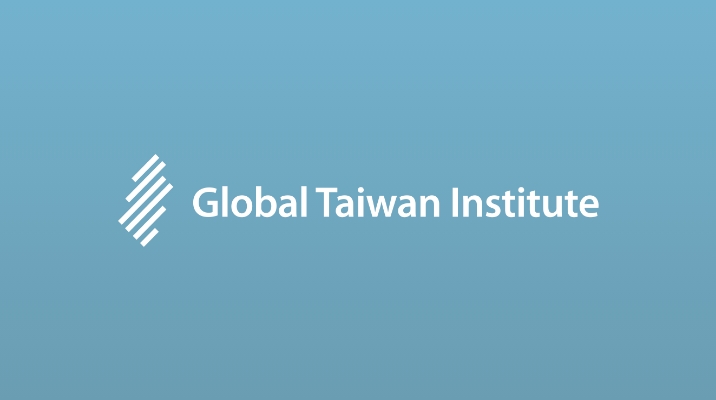Taiwan’s semiconductor sector has established itself as a leader in technological manufacturing, boasting the world’s most advanced fabrication facilities. Over 60 percent of the world’s semiconductors, and almost 90 percent of the most sophisticated chips, are manufactured on the small island. This dominance has given Taiwan strategic leverage internationally, especially regarding cross-Strait relations. Geopolitical experts often credit Taiwan’s role in the global semiconductor supply chain as a deterrent against military aggression from China—a concept commonly known as the “silicon shield.” While Taiwan’s semiconductor industry may currently be the most prosperous in the world, its dependency on China as its largest export market—with nearly 60 percent of its chip exports directed to China in 2023—and its reliance on the United States for advanced manufacturing equipment places the small island at the very center between the two industrial giants in the hyper-competitive artificial intelligence (AI) race.
In recent years, US semiconductor export restrictions against China have resulted in notable repercussions for Taiwan’s manufacturers. These restrictions have forced leading companies such as Taiwan Semiconductor Manufacturing Company (TSMC, 台灣積體電路製造股份有限公司) to cancel sales to their Chinese clients, leading to a decline in revenue. For instance, TSMC’s yearly revenue dropped significantly by 4.17 percent after the Biden Administration announced sweeping limits in late 2022 on the export of advanced chips to China, in order to to curb their development of advanced military systems.
Both Taiwanese and American manufacturers have pursued efforts to diversify production away from the hotbed of the Taiwan Strait, with TSMC investing in new facilities in Japan, the United States, and Germany and the Biden Administration passing the CHIPS and Science Act to promote domestic chip production. However, this push for diversification may actually harm Taiwan’s political standing. Yes, it does reduce its reliance on the Chinese market, but as production capabilities expand across the world, Taiwan risks losing its semiconductor dominance—and in turn, the geopolitical leverage that comes with it. On the international stage, Taiwan’s “silicon shield” may be crumbling. However, there is also a less-documented internal danger that jeopardizes the prosperity of Taiwan’s semiconductor production.
Not Enough Talent
For the past three years, the Taiwanese government and its semiconductor industry have struggled to recruit new chipmakers. Just look at the numbers: in 2021, there were a recorded 27,701 unfulfilled engineer positions in the entire industry. This figure increased to 35,167 in the first quarter of 2022, a 40 percent increase from the same period in 2021.
The industry’s labor shortage is further exacerbated by a declining pool of young talent caused by Taiwan’s education failures and demographic challenges. In September 2021, Liu Yangwei, the chairman of leading Taiwanese electronics manufacturer Hon Hai Technology Group (Foxconn, 鴻海科技集團), emphasized the need for more graduates in semiconductor-related fields. Liu claimed that the biggest challenge in Taiwan’s development of third-generation semiconductors is the gap between the supply and demand of talent, citing the industry’s 28,000 open positions and the mere 12,000 graduates in related fields that year.
The lack of graduates in semiconductor-related fields reflects a decline in STEM degrees, as seen in Taiwan’s younger generations as education officials observe a preference among students for different subjects. In the past two decades, Taiwanese universities have seen a steady decline in the proportion of STEM graduates in both undergraduate and graduate programs. Before 2005, STEM graduates accounted for upwards to 40 percent of all graduates; but by 2020, they accounted for only 32.3 percent.
This decline in young STEM talent can be attributed to multiple factors. One of these is demographics, as Taiwan has the lowest fertility rate worldwide. Coupled with an aging population, universities—and thus the tech industry—will only face increasing difficulty finding new, qualified talent. Second, due to education reforms and new curricula requiring fewer learning hours and less depth in math and science, professors, teachers, and industry professionals have noted students’ weaker foundations in math and science, and worry about their inability to keep up with the future demands of the overall tech industry. Third, the semiconductor industry has developed a notorious reputation for unhealthy working conditions full of long hours and intense pressure. Taiwanese students are no longer willing to pursue doctorates in semiconductor-specialized fields when there are more appealing opportunities in other job markets, thereby leading to fewer research analysts furthering semiconductor innovation.
Finally, officials fear the current university entrance exam system is not the most effective in identifying the island’s most exceptional math and science students, and many local students search for opportunities to study abroad. According to data from Taiwan’s Ministry of Education (MOE, 教育部), the number of senior high school graduates attending further studies abroad increased by more than 20 percent from 2011 to 2017. This trend of increased foreign studies observed in Taiwanese students reflects the surge in global competition for semiconductor talent. The desire for foreign talent has ramped up within the East-Asian region, where the semiconductor value chain is most highly concentrated; however, as other countries around the world also recognize the current and future strategic importance of semiconductors on the international stage, this will only continue to intensify their efforts to advance domestic manufacturing capabilities and attract foreign talent. Out of all the 53,051 Taiwanese students who traveled abroad for work or study in 2022, 20,487 students chose to go to the United States (the most out of any country), with another 7,780 students traveling elsewhere in Asia, mainly Japan.
Taiwan faces a pressing issue: with the current number of workers already insufficient, the small island risks losing even more of its local professionals and young talent.
To make matters even more urgent, with the recent exponential growth in AI research and development (R&D), the demand for advanced, high-computing AI chips—and by extension, the demand for labor—will only continue to soar.
The Taiwan-based manufacturer TSMC provides a prime example. As part of the company’s global expansion efforts to both meet the rising demand for chips and hedge geopolitical risk, TSMC committed more than USD $12 billion to the construction and operation of their first semiconductor fabrication facility in Arizona in 2020, with production expected to begin in 2024. However, in July 2023, TSMC delayed the facility’s opening until 2025, citing a “shortage of specialist workers” as the root cause. This has forced the manufacturing giant to send some of its experienced Taiwanese technicians to the United States to train prospective workers. Not only are Taiwanese students leaving to study internationally at higher rates, but the labor shortages Taiwanese manufacturers struggle with within their offshore operations are also directing training and talent cultivation away from the small island.
Current Attempts to Address the Issue
Recognizing the economic, political, and cultural importance of the semiconductor industry, the Taiwanese government and chip manufacturers have implemented strategies to help meet the industry’s future labor demand. In 2021, the Executive Yuan unveiled a new policy, which differed from previous efforts in that it focused on talent cultivation rather than the industry’s innovative capability. The plan imposed “Regulations on Industry-Academic Cooperation and Talent Cultivation and Innovation in National Key Fields”—which worked to foster talents needed by the industry, by increasing industry-university collaboration through the joint establishment of semiconductor R&D institutes. Since its implementation, nine universities have set up semiconductor R&D institutes, and university programs across all of Taiwan have seen a 10 percent increase in undergraduate programs, and a 15 percent increase in graduate programs, in crucial field—such as semiconductors, AI, electronic engineering, and materials engineering. Additionally, the National Science and Technology Council of Taiwan (NSTC, 國家科學及技術委員會) has devoted NTD $35 billion (USD $1.1 billion) to support the establishment of semiconductor talent development programs, which have reportedly produced 848 master’s and 241 PhD-level students from 2021 to 2023.
TSMC has also adjusted to the rising labor demand. Initially utilizing a “buddy system” that paired senior engineers with recruits one-on-one, the company has adopted a more efficient training system to meet the growing chip demand amid a labor shortage. In 2021, TSMC established a recruit training center in Taichung, Taiwan, where all new Taiwan-based engineers are required to spend eight weeks learning. This systematic approach allows the company to quickly train new engineers who are ready and qualified to work. Additionally, the company is part of a larger collection of Taiwanese manufacturers who have taken matters into their own hands. After campaigning about the industry’s need for more talent and catching the attention of the government, numerous universities formed semiconductor-specific schools—such as the International College of Semiconductor Technology at National Yang Ming Chiao Tung University (NYCU, 國立陽明交通大學). In 2020, TSMC also began a doctorate scholarship that offers NTD $500,000 (roughly USD $15,000) to students annually for up to five years of study. Recipients receive mentorship and internship opportunities, and upon completion of their degree are given the choice to either enter the industry, or remain in academia to teach or conduct research.
How to Proceed in the Future
While these efforts by both the government and enterprises are optimistic, they need to be more expansive to tackle the ongoing labor shortage and the growing demand for talent in the industry. Here are four policy recommendations that the Taiwanese government and semiconductor manufacturers should pursue to address these issues.
First, the government should consider investing further in high-school semiconductor education and awareness. This could range from semiconductor-specific elective courses at vocational schools to extracurricular programs such as university-sponsored semiconductor research, career outlook seminars, and in-person visits to fabrication facilities and research institutes. These activities would foster a greater interest in STEM and allow young high-school students to gauge potential career paths within semiconductor-related fields.
Second, the government, enterprises, and academia should engage in joint efforts to enhance gender diversity across the entire semiconductor industry. Currently, women are severely underrepresented in both semiconductor education and the workforce. In 2023, women only represented 5.9 percent of TMSC’s top management positions and only 34 percent of the company’s entire workforce. By curating dedicated scholarships, research programs, and internship opportunities, universities can further encourage women to pursue education in STEM, giving Taiwanese manufacturers a significantly larger talent pool from which to hire.
Third, the government should explore more effective strategies to recruit foreign talent. With the world’s lowest birth rate, the small island has already begun to look elsewhere for prospective chipmakers—with, for example, semiconductor colleges recruiting hundreds of students from the Indian Institutes of Technology (IITs). To expand upon these efforts, companies should establish additional semiconductor R&D operations in less-explored areas in Europe and the United States, where they can find and train young talent willing to work in Taiwanese-based operations.
Finally, the industry must undergo a public rebranding. Currently, many promising students are declining to pursue semiconductor education opportunities because of the notorious work-life balance that comes with the industry. If companies really want more local talent at their doorsteps, they must actually attract younger generations, whether through workplace wellness initiatives or less restrictive work arrangements.
The main point: Taiwan’s semiconductor industry boasts unparalleled dominance and strategic geopolitical importance; however, the failure to meet the rising demand for labor underscores the dire need for specialized talent. If the industry intends to progress and maintain its semiconductor supremacy in the future, it must adopt new strategies and make talent cultivation an immediate priority.




